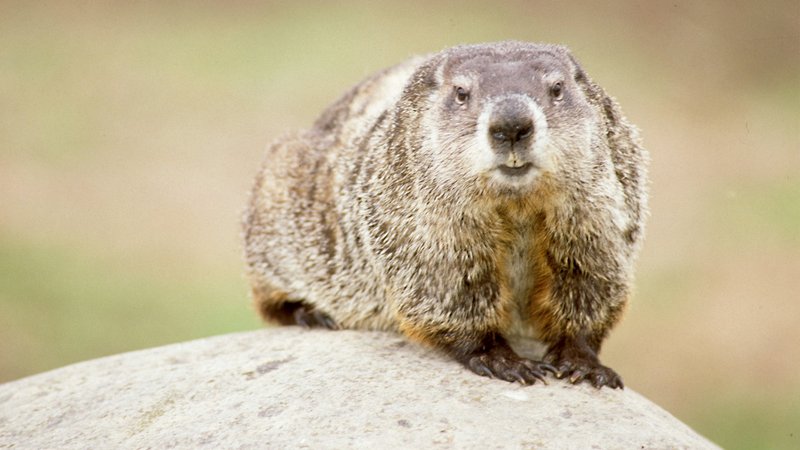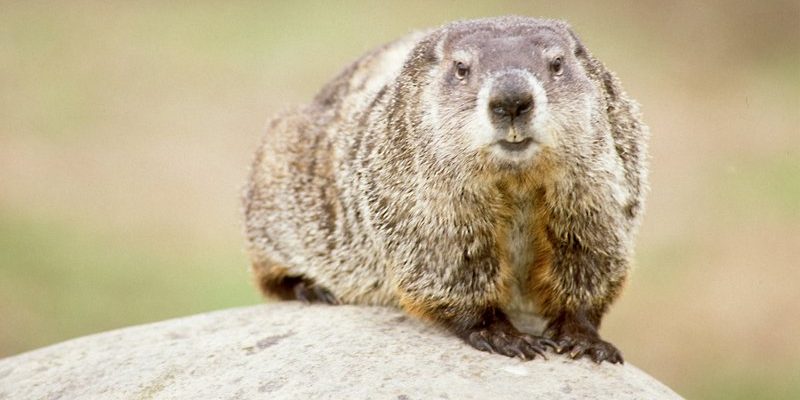
Groundhogs might seem simple at first, but there’s a world of behavior and biology behind their charming exterior. From their hibernation habits to their unique social structures, each aspect of their lives contributes to their intriguing character. Here’s the thing: knowing more about groundhogs not only expands our appreciation for wildlife but also helps us understand the balance of nature. Now, let’s dive into those facts!
1. Groundhogs Are Excellent Hibernators
Groundhogs are among the best hibernators in the animal kingdom. During the winter months, they enter a deep sleep known as torpor, allowing them to conserve energy when food is scarce. Their heart rate drops significantly, often plunging to as low as 4 beats per minute. Can you imagine being in such a deep sleep that your body practically shuts down?
They typically spend about five to six months in hibernation, reemerging in early spring. It’s fascinating to think about how these small creatures can withstand the cold months while curled up in their burrows. This hibernation strategy helps them survive harsh winters, and when they wake up, they’re ready to munch on fresh greens and start their families.
2. Groundhogs Have Strong Family Bonds
You might be surprised to learn that groundhogs are quite social animals, especially in their early life. Female groundhogs typically give birth to 2 to 6 pups in the spring, and they raise them in burrows. The young ones stay with their mom for about two months, learning crucial survival skills before venturing out on their own. Isn’t it heartwarming to think about how these little ones bond with their mother?
As they grow, they often stay close to their family units. Groundhogs communicate using a range of sounds, including whistles and growls, to alert each other about potential threats. These social behaviors illustrate the importance of family ties, even in the animal kingdom.
3. They’re Known for Their Weather Predictions
Every February 2nd, millions tune in to see if Punxsutawney Phil will see his shadow, predicting whether we’ll have six more weeks of winter or an early spring. This quirky tradition actually has its roots in ancient European folklore, where a badger or hedgehog was used for the same purpose. The groundhog’s ability to predict the weather has made it a cultural icon, and folks have fun gathering to watch the festivities.
While it’s all in good fun, it’s important to remember that groundhogs don’t actually have any special powers when it comes to forecasting the weather. They simply come out of hibernation around that time as part of their natural cycle. Still, it adds a fun twist to how we view these animals, doesn’t it?
4. Groundhogs Are Great Digging Machines
Groundhogs are exceptional diggers, creating extensive burrow systems that can be up to 30 feet long! These burrows serve as homes, nurseries, and escape routes from predators. You might be wondering how they dig such impressive structures with their little paws. Well, they have strong front claws that allow them to easily move dirt and carve out these underground spaces.
These burrows also have different chambers, which can include a sleeping area and even a bathroom. It’s like a little underground borough! Plus, their burrowing habits help aerate the soil, which benefits plants above ground. Groundhogs really do play a role in their ecosystem, don’t they?
5. Their Diet is Quite Vegetative
Groundhogs are herbivores, munching on a variety of plants, fruits, and vegetables. Their diet consists mainly of grass, clover, and dandelions, but they also enjoy fruits like apples and berries when they’re in season. It’s interesting how their preferences can change with the seasons, just like the way we crave certain foods at different times of the year.
Because they need to eat a lot to store fat for hibernation, groundhogs spend much of their time foraging during the warmer months. This habit can sometimes lead them into gardens and farms, much to the dismay of gardeners. If you’ve ever had a groundhog nibble on your prized tomatoes, you know how frustrating that can be!
6. Groundhogs Have a Unique Defense Mechanism
When it comes to defense, groundhogs have a couple of tricks up their furry sleeves. If they sense danger, they can let out a loud whistle to warn others nearby. This whistle acts as a call to the rest of the family to retreat into their burrows quickly. It’s like having a built-in alarm system!
In addition to their vocal warnings, groundhogs can also be quite formidable when threatened. While they prefer to flee from danger, they can stand their ground if cornered and pack a surprising punch with their strong teeth and claws. Just like any other creature, they’ll do what they need to protect themselves.
7. They’re Not Just a North American Species
Most people associate groundhogs with North America, but they’re not limited to just this continent. The woodchuck (Marmota monax), a common type of groundhog, is one of several species found around the world. Other related species can be found in Asia and Europe, like the Alpine marmot and the Himalayan marmot.
What’s really fascinating is that while all these species share some common traits, they’ve adapted to different environments and climates. Some groundhog relatives live in colder mountain regions, while others thrive in grassland ecosystems. It’s a beautiful example of how nature can diversify, wouldn’t you agree?
8. Groundhogs Have a Role in Biodiversity
Groundhogs play an essential role in their ecosystems. As herbivores, they help manage plant growth, contributing to a balanced environment. By eating certain plants, they can prevent any one species from dominating an area. This, in turn, promotes biodiversity, allowing various plants to thrive and create habitats for other species.
Moreover, their burrowing activities create homes for many other animals, including rabbits, foxes, and even snakes. So, in a way, groundhogs are like little architects of their environment, shaping their surroundings and promoting a variety of wildlife.
9. They Can Be Found in Various Habitats
Groundhogs are adaptable creatures. You’ll find them in a variety of habitats, from woodlands and farmland to suburban areas. They prefer areas with plenty of vegetation for food and spaces where they can dig their burrows, but they’re also skilled at making the most of their surroundings.
Interestingly, as human development expands, groundhogs have adapted to urban areas, paving the way for unique interactions with people. Just think about it: a cute groundhog in your garden can be both delightful and frustrating!
10. Groundhogs Have a Unique Life Cycle
The life of a groundhog is fascinating, marked by a series of stages from baby to adult. After a brief gestation period (about 32 days), the young groundhogs are born hairless and helpless. It’s amazing to think how quickly they grow, developing fur and learning to venture out within two months.
In the wild, groundhogs generally live around three to six years, although some can survive longer under the right conditions. The challenges they face—from predators like hawks and coyotes to human encounters—can impact their lifespan. This cycle of life is a reminder of the resilience of these furry creatures.
In conclusion, groundhogs might seem like simple creatures at first glance, but these fascinating facts reveal just how remarkable they truly are. From their unique hibernation habits to their role in the ecosystem, appreciating the lives of groundhogs allows us to understand and cherish the natural world a little more. Next time you spot one, you’ll know there’s so much more to them than meets the eye!

